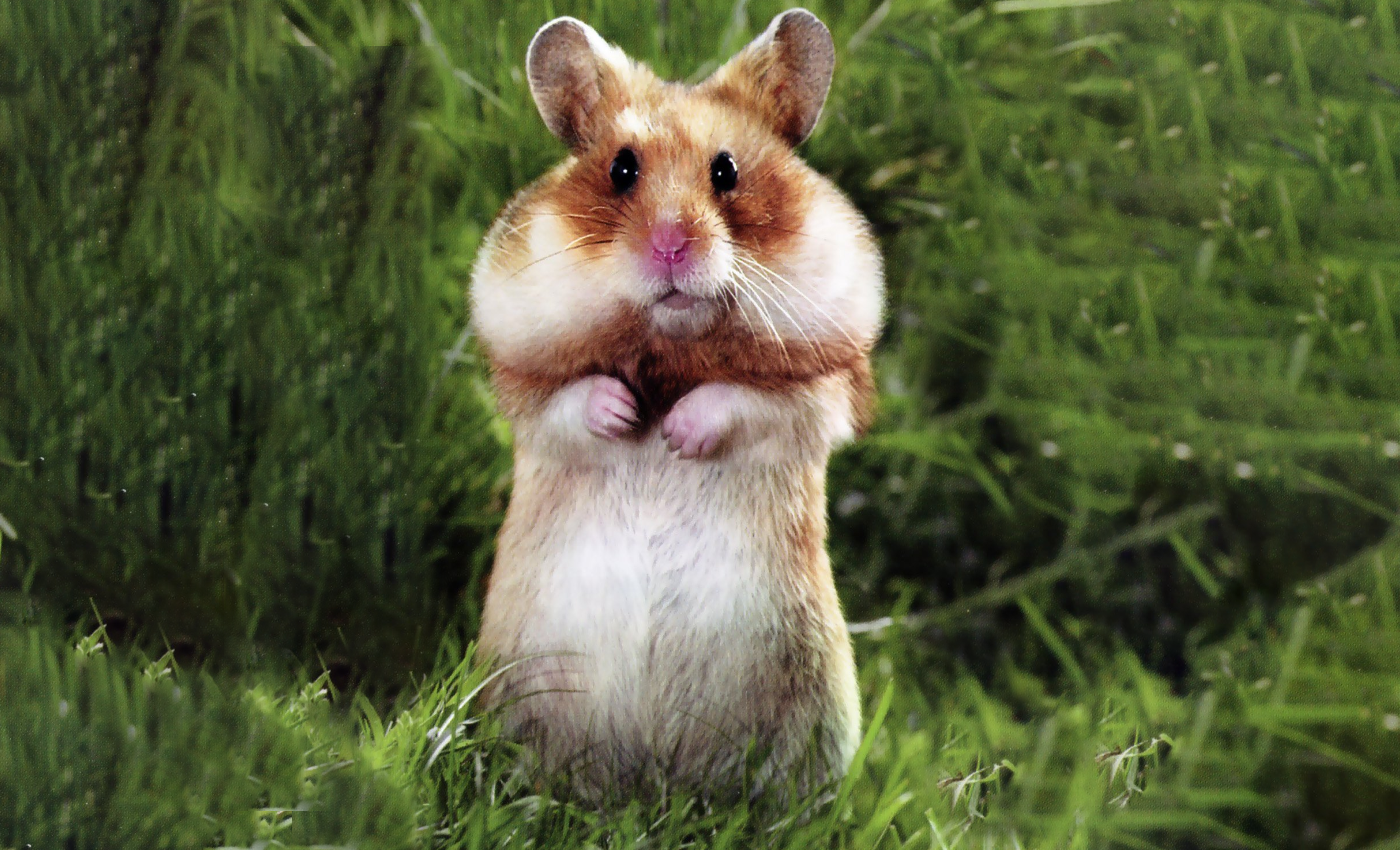Physical Characteristics
Size and Appearance
The Caucasian Hamster exhibits a compact build, with adults typically measuring between 16 to 18 cm in body length and weighing from 180 to 250 grams. Its fur is characterized by a gray-brown coloration, often with varying shades that become less pronounced after molting. A distinct black spot is noticeable between its front legs. The hamster’s tail measures approximately 2 to 3 cm in length, contributing to its overall balance and agility in its mountainous habitat.
Behavior and Habitat
Natural Behavior and Adaptations
Caucasian Hamsters are highly adapted to their mountainous habitat, where they create intricate burrow systems for shelter and food storage. These burrows may house several individuals, sometimes forming colonies ranging from 3 to 30 rodents within a localized area. They are primarily herbivorous, relying on a diet consisting mainly of plant-based foods found in their alpine environment.
Ecological Role and Conservation Status
Endangered Species and Conservation Efforts
The Caucasian Hamster faces severe threats to its survival, with populations in many countries such as Armenia, Georgia, and Azerbaijan nearing extinction. Habitat loss due to human activities, including agriculture and infrastructure development, poses a significant risk to these rodents. Conservation efforts are critical to protecting remaining populations and restoring suitable habitats to ensure their long-term survival.
Human Interaction and Captivity
Interaction with Humans
Due to its shy and defensive nature, the Caucasian Hamster is not suitable for domestication or captivity. Attempts to keep them in captivity have been minimal, primarily due to their specific habitat requirements and natural behaviors that are difficult to replicate in artificial settings.
Frequently Asked Questions (FAQs)
1. Can the Caucasian Hamster be kept as a pet?
No, the Caucasian Hamster is a wild species and is not kept as a pet due to its specialized habitat requirements and defensive behaviors.
2. What is the diet of the Caucasian Hamster?
Caucasian Hamsters primarily feed on plant-based foods such as seeds, grasses, and roots found in their mountainous habitats.
3. How many offspring do Caucasian Hamsters have?
In their natural environment, females may give birth to litters ranging from several pups to a dozen, depending on food availability and environmental conditions.
4. Why is the Caucasian Hamster endangered?
The main threats to the Caucasian Hamster include habitat loss, fragmentation, and degradation caused by human activities like agriculture and infrastructure development.
5. Do Caucasian Hamsters hibernate?
Yes, Caucasian Hamsters undergo a period of dormancy during the winter months to conserve energy and survive harsh environmental conditions.
6. What is being done to conserve the Caucasian Hamster?
Conservation efforts focus on habitat protection, restoration initiatives, and raising awareness about the importance of preserving this endangered species.
7. Where can Caucasian Hamsters be found?
Caucasian Hamsters are primarily found in the mountainous regions of Armenia, Georgia, Azerbaijan, and other parts of the Caucasus range, where suitable habitats still exist.
Conclusion
The Caucasian Hamster, known for its resilience in alpine environments, faces significant challenges due to habitat loss and human impact. As efforts continue to protect and restore its natural habitat, understanding its ecological role and unique adaptations becomes crucial. Preserving the Caucasian Hamster not only ensures the survival of a remarkable species but also contributes to the biodiversity and ecological balance of its mountainous habitats.

Post Comment